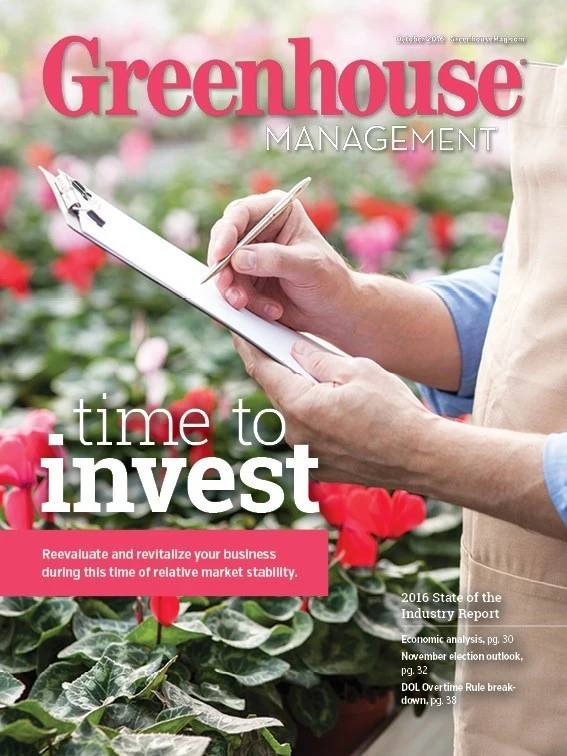
What happens when a team of engineers specializing in electronic signals takes an interest in plants? The result is PhytlSigns, a device that digitally processes plant electricity and converts those signals to a computer or mobile platform via Bluetooth in the form of a data set.

The product, an invention of the Switzerland-based technology company Vivent, utilizes a sensor that looks similar to the one that takes your pulse at the hospital. The sensor is attached to a single leaf of a plant’s foliage, and its purpose is to detect changes in the environment that the plant notices and reacts to in the form of electrical activity. For example, the device can record if a person walks past the plant, if the plant is too dry and needs water, if the plant notices temperature spikes or dips, or if it’s experiencing pest pressure. When the plant reacts via electric signal, it’s processed through the base of the device, and data is recorded and sent to the user’s platform. It also emits a warbling, high-pitched hum to notify them.
“We thought that perhaps by measuring information directly from the plant, we could provide additional information for greenhouse managers so they could grow better crops, or the same crops with fewer resources, less water, less CO2,” says Carrol Plummer, the co-inventor of PhytlSigns. Her background is in tech startups and installing internet networks in trains.
She compares PhytlSigns’ method of collecting information to visiting a doctor’s office. “[The doctor] doesn’t measure the temperature of the room when he goes to see the patient. He measures the temperature of the person,” she says.

Plant electricity isn’t a new idea by a long shot. It was discovered more than 100 years ago at the University of Cambridge, Plummer says. But plant activity is relatively small compared to competing electromagnetic interference all around us, especially in this modern day of TVs, radios and smartphones. And before PhytlSigns, measuring this type of activity and drowning out the outside signals took controlled laboratories and expensive equipment, Plummer says. “We were able to amplify the signal and reduce the noise so we could get a good reading from the plant,” she says. This allows users to measure plant readings while it’s in the environment in which it would be growing — like a greenhouse, for instance.
Plummer and her co-inventor (and husband), Nigel Wallbridge, are currently working with horticulture researchers in Europe, the University of Alberta in Canada and University of Missouri in the U.S. to test PhytlSigns to see how it can be applicable to greenhouse growers. So far, they’ve seen positive results with every type of plant they’ve tested from edible crops to ornamental ones, meaning each variety gave off signals that were measurable by the device.

Building on their successes, the Vivent team has three big goals they’re striving toward. One is data connectivity. “Right now, our device uses Bluetooth, which is good in the field, but may not work with all greenhouse setups,” Plummer says. Another is the development of a selection of new leaf clips that will be suitable for different varieties. They’re also working to better separate the data they’re collecting from the plants. (Right now, the plant records the same type of data point for each and every reaction it experiences, so in order to provide better results to growers, the team is developing a way to separate those signals so that each reaction — be it a new CO2 level, light level or disease presence — can recorded by category.) She says that in six months to one year, she believes that PhytlSigns will have advanced enough to present to commercial growers for testing.
So far, Plummer says she’s enjoyed delving into the world of plants. “We are very excited by it because we think this way of measuring the vitality of plants will, in the end, lead growers to a deeper understanding of their plants, or maybe to understand their plants in a different way,” she says. “We are keen to working with growers who are interested in this.”
For more information about PhytlSigns, visit phytlsigns.com

Explore the October 2016 Issue
Check out more from this issue and find your next story to read.
Latest from Greenhouse Management
- Anthura acquires Bromelia assets from Corn. Bak in Netherlands
- Top 10 stories for National Poinsettia Day
- Langendoen Mechanical hosts open house to showcase new greenhouse build
- Conor Foy joins EHR's national sales team
- Pantone announces its 2026 Color of the Year
- Syngenta granted federal registration for Trefinti nematicide/fungicide in ornamental market
- A legacy of influence
- HILA 2025 video highlights: John Gaydos of Proven Winners





